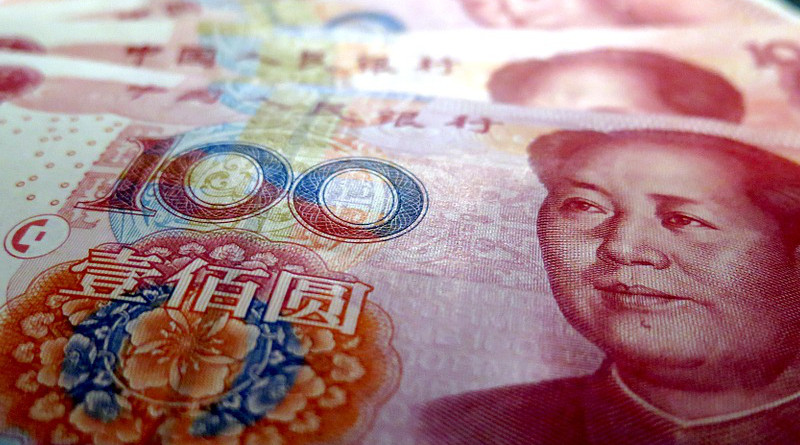What Are Immediate Worries And Foresights Echoing Discussions Of Deflation In China? – Analysis
By Anbound
By Wei Hongxu
Again, Chinese central bank officials responded to claims on deflation and policy issues, after the Q1 macroeconomic data released. Director-General of the Monetary Policy Department of the People’s Bank of China (PBC) Zou Lan made his remarks at the central bank’s first-quarter financial statistics press conference on April 20.
The rapid growth of money supply and credit coexists with falling prices, which is essentially influenced by time lag, said Zou. The PBC implements a prudent monetary policy, focusing on supply side. With the strong support of a package of policies to stabilize the economy since last year, domestic production has continued to recover at a faster pace. Yet, it is a process that takes time to transmit effects from manufacturing, distribution, and logistics to consumption. The resurgence of COVID-19 has also dampened business confidence as well as people’s consumption willingness. Overall, financial data outperforms economic data. In fact, it reacts to the status quo that the recovery of supply and demand is not matched.
Zou pronounced a clear difference between the continuous improvement in economic operation and deflation. As the effects of financial support emerge, consumer demand is expected to pick up further. Price increases in the second half of the year may gradually return to the average level of previous years. The annual CPI will show a “U”-shaped trend. In the medium and long term, the aggregate supply and demand is generally balanced, the monetary conditions are reasonable and moderate, and residents’ expectations are stable. There is no basis for long-term deflation or inflation in the country, said Zou.
This sounds convincing to a certain extent, which the central bank interpreted the mismatch between supply and demand attributed to “time lag”. This also implies that deflation in the current context appears temporarily. Along with the demand recovery in medium and long-term, supply and demand will gradually move toward the balance.
Researchers at ANBOUND analyzed that such a statistics-based deflation does not indicate a shrinkage in the true sense of prices and the real economy. More than that, it demonstrates a misalignment between short-term money supply and insufficient demand. It is not a cause for worrying in a short-term.
Why makes the market worrying too much about deflation? As we have warned of before, inventory is a trouble to likely restrain demand recovery. Depressed domestic prices cannot be ignored, which has signified sluggish demand recovery. The problem is similar with the previous oversupply that has lasted so long in the past. Long-term demand recovery does not only rely on expectations and confidence, but also rely on improvement of supply-side efficiency and market clearing.
The central bank worked hard to explain deflation, but did not answer the question of inventory, and what its foresight is.
The central bank’s dismiss of deflation indicated where its monetary policy would go. Furthermore, it implied no necessary to conduct more policy stimulus. A-share market fell sharply again on April 21, following the central bank’s remark. It is something to do with the capital market’s expectation on the currency liquidity. Under the backdrop of a large amount of credit supply and downturn prices, another worrying is whether the monetary policy is effective or not. This is more confusing the market.
In the past few years, the pandemic greatly harmed economic activities. The government-supported infrastructure investment and state-owned enterprise (SOE) investment have been consistently increasing for the goal of “steady growth”. Private investment, an endogenous driving force in market, has been in depressed state. Consequently, large amounts of credit supply eased by monetary policy went to some low-yield projects that local governments and state-owned enterprises handled. It leads to a greater imbalance between supply and demand. Excess inventory, sort of structural problems, has been brought by real estate, local debts, and SOEs debts increasing. They took up more and more financial resources, however, resulted in massive “negative assets”.
What is foreseen? It is inevitable in a long-term process of “deleveraging”, which will constrain economic expansion, and lead to a vicious circle of deflation and economic contraction. This point may take time to be verified. Nevertheless, the recovery of short-term demand and the distortion of long-term supply and demand all that make the domestic economy in a recovery track more complicated. The headline inflation will display different characteristics and contradictions. During this process, monetary policy should maintain a structural and aggregate balance to achieve simultaneous adjustments on supply side and the demand side. We are not much optimistic to make a judgment.
Final Analysis Conclusion:
The central bank denied China facing a possible deflation, and pointed out the rapid growth of money supply and credit coexists with falling prices, which is essentially influenced by time lag. It indicates the recovery of supply and demand is not matched. However, the issue of deflation implies not only “immediate worries” of the demand recovery, but also “long-term concerns” over the economic structure and supply side. To resolve this complex contradiction, it needs a balanced monetary policy, but to avoid over-optimism.
Wei Hongxu is a researcher at ANBOUND

